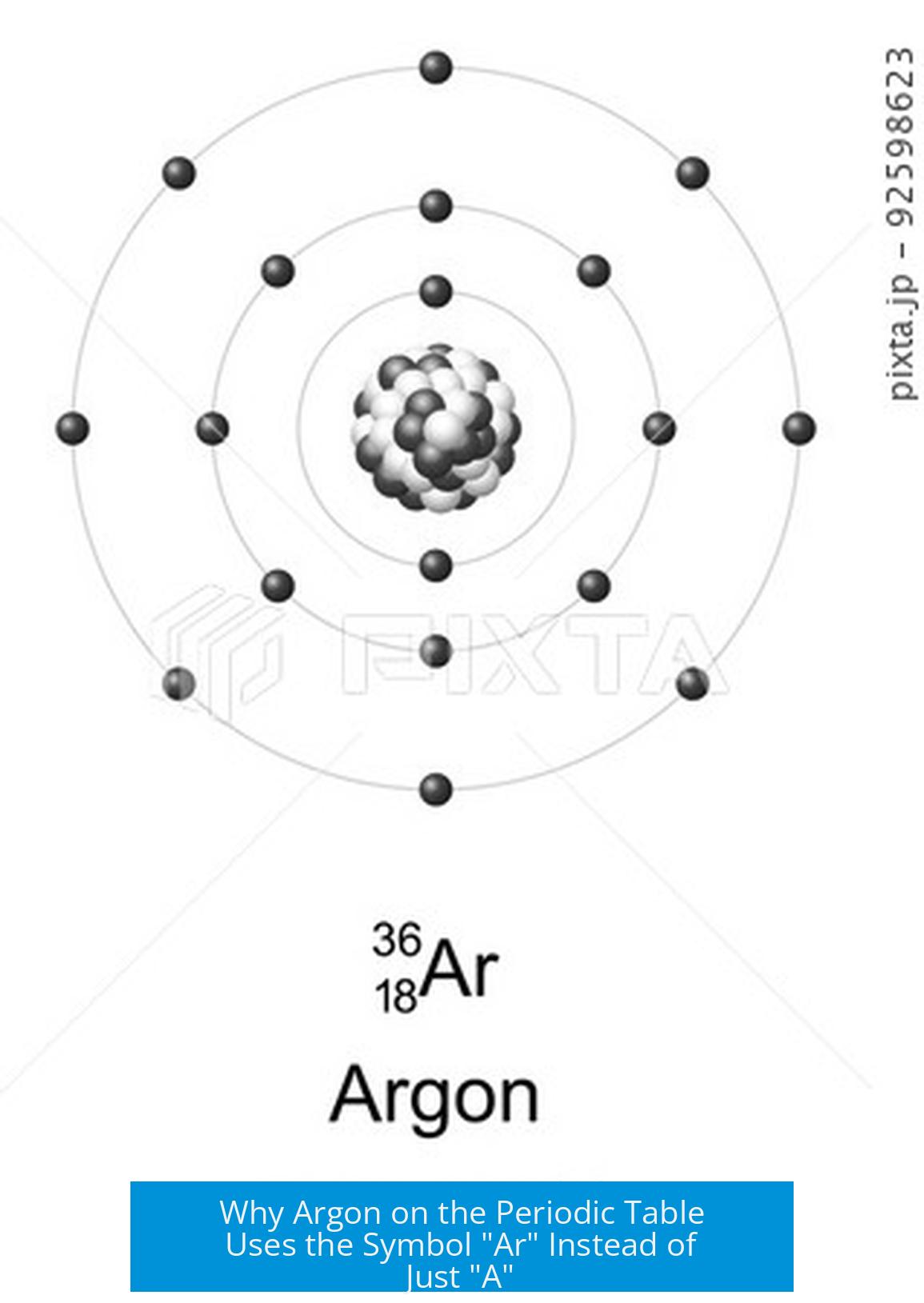Why Argon’s Symbol Is “Ar” Instead of “A”
Argon’s chemical symbol is “Ar” because the original one-letter symbol “A” was replaced to reduce confusion and follow naming conventions established by the International Union of Pure and Applied Chemistry (IUPAC) in 1957. This choice aligns with a general preference for two-letter symbols using the first two letters of the element’s name or, when needed, letters from the first two syllables.
Historical Background of Argon’s Symbol
Argon, with atomic number 18, initially had the symbol “A.” This was changed to “Ar” during the 1957 symbol standardization by the IUPAC. The commission aimed to standardize element symbols and reduce ambiguities in chemical notation.
The Official Decision in 1957
The symbol “Ar” for argon was adopted alongside other new symbols such as “Es” for einsteinium and “Md” for mendelevium. Alexander Silverman, the commission chair, explained this preference for two-letter symbols starting with the element’s first two letters. In cases where this was unsuitable, the first letters of two syllables were chosen.
Avoiding Confusion in Chemical Equations
Using “A” as a symbol poses conflicts. The letter “A” frequently appears as a variable in chemical equations, reaction kinetics, and formulas. For example:
- A + B → C + D (reaction components)
- HA → H+ + A− (acid dissociation)
Single-letter element symbols are generally reserved for widely recognized elements. Since “A” was already heavily used in equations and language, adopting “Ar” for argon minimizes confusion and enhances clarity.
General Naming Conventions for Element Symbols
The IUPAC prefers symbols that reflect the element’s name directly—typically using the first one or two letters. For elements with names prone to overlap or where a single letter conflicts with common variables, two-letter symbols improve precision.
There is also a strong tradition in chemical nomenclature to maintain consistency. This helps scientists worldwide quickly identify elements without ambiguity.
Summary of Key Points
- Argon’s symbol was originally “A” but changed to “Ar” in 1957 by IUPAC.
- IUPAC favors two-letter symbols using the first two letters of the name.
- Using just “A” caused confusion since “A” appears commonly in chemical notations.
- The change supports global consistency and clarity in chemistry.
Why is the symbol for argon represented as “Ar” instead of just “A”?
The symbol for argon was originally “A” but changed to “Ar” in 1957. This was to avoid confusion with the letter “A,” commonly used as a variable in chemistry and mathematics.
How did the decision to use “Ar” for argon come about?
The element naming commission preferred using the first two letters of an element’s name. For argon, “Ar” was selected after studying global usage and to maintain consistency across nations.
Are there other elements with two-letter symbols based on similar rules?
Yes, the commission recommends two-letter symbols starting with the first two letters except when unsuitable. In those cases, one letter from each of the first two syllables is used, like “Es” for einsteinium.
Why don’t all element symbols use just one letter?
Single-letter symbols are limited to some elements to avoid overlap with variables or other notations in chemistry. This helps reduce confusion in formulas and reactions.
Does tradition play a role in how element symbols are chosen?
Tradition influences naming rules, such as preserving one-letter symbols only for specific elements and using the “-ium” suffix for many new elements. These conventions help maintain clarity and consistency.





Leave a Comment